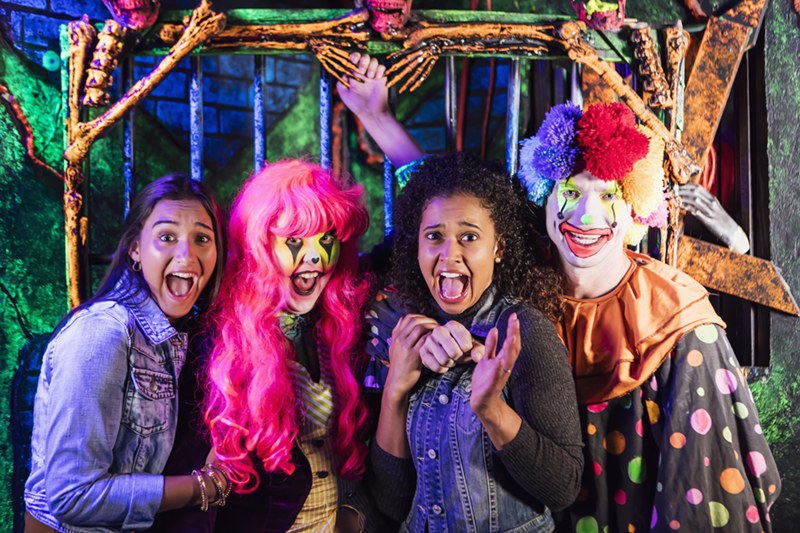8 Factors to Consider and 4 Ways to Mitigate Risks
Get ready, ghouls and ghosts, because the spookiest season of the year is just around the corner—Halloween! From pumpkin carving to trick-or-treating, it is a time when long-standing traditions come to life with a delightful dash of fright.
However, amidst all the fun lurks a few hidden dangers, especially with the spine-chilling spectacles of haunted houses.
Armed with these insights from our experts at McGowan Allied Specialty Insurance, you can turn these sinister scenarios into a spooktacular experience that keeps everyone on the edge of their seats while also ensuring their safety.
8 Factors that Impact Haunted House Safety
Haunted houses are a popular attraction during the Halloween season, but they also come with challenges. If you’re not careful, these challenges could lead to problems for your business and your guests.
Here are 8 ways your Haunted House is at risk:
- Slip and fall hazards
Cluttered walkways, loose rugs and mats, wet floors, and uneven flooring are just a few reasons someone would receive an injury from a slip or fall in a haunted house.
Visitors should be warned about any potential slip and fall hazards that can not be immediately removed by posting signs or giving verbal warnings.
- Overwhelmed visitors
While getting scared is part of the experience at a haunted house, some people may become too scared and react in ways that could lead to injury. For example, they might trip or fall, react with aggression, or have a panic attack.
To help reduce the risk of injuries, haunted house operators should provide a safe place for people to exit if they feel too scared and train staff members on how to handle guests who are overwhelmed.
[Callout]
Also read: Slip, Trip, and Fall Claims
- Overcrowding
Haunted houses draw sizable crowds, with many people in attendance at once. Enormous crowds and elevated endorphins can lead to panic in an emergency, making it difficult to evacuate safely.
It is essential to have a clear evacuation plan and make sure each staff member is familiar with it. Be sure to install fire alarms and sprinklers throughout your haunted house, and keep emergency exits clear and well-lit.
- Exposed nails
Exposed nails and other protrusions can cause serious injuries, including cuts, bruises, puncture wounds and falls. In a haunted house, where there may be flammable materials present, these hazards can also lead to fire.
Haunted house operators should inspect their premises regularly to cover or remove any exposed nails or protrusions.
- Collision hazards
Visitors to haunted houses are often in dark, confined areas with limited visibility. This can make it difficult to see where they are going, which can lead to collisions with other guests, walls and props.
They are also focused on the thrills and less aware of their surroundings, which increases the risk of collisions. Signs should be posted to warn visitors about potential hazards, such as narrow passages or low ceilings.
- Falling objects
Falling objects can be a hazard in a dark haunted house. Visitors may not see them, which could increase the risk of injury.
Haunted house operators should regularly identify and secure any potential falling objects. They should also use lightweight props, avoid sharp objects, and warn visitors about any potential hazards by posting signs or using verbal warnings.
- Flashing lights
Flashing lights make it difficult for visitors to see where they are going, which increases the risk of falls and collisions. They can also make it difficult for visitors to find their way out of a haunted house in case of an emergency.
